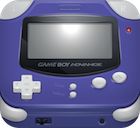
The M4A library otherwise known as Make SoundCodes for AGB (MKS4AGB) is used to play sound on the Game Boy Advance.
Version 3.0 of the Game Boy Advance SDK includes a folder called MusicPlayerAGB2000, this contains the documentation and some pre-compiled object files which the documentation calls sound object file groups.
The documentation for the library mentions that the pre-compiled sound object files are normally provided by the sound engineer on the team.
These are then linked to the program and the programmer can then use pre-build API functions to play them on the Game Boy Advance.
These are the result of converting standard Sound formats (AIFF & MIDI) into a format that can be given to a programmer to link directly into the game.
This allows the programmer to directly take the resulting sound object files and add them to their standard Makefile and play the sounds using the M4A API.
There are a number of useful executables in the mp2000 folder:
The library is built to make it as easy as possible for both the sound engineer and the game programmers to inject sound into their game.
On the sound engineer front all they need to do is create their standard AIFF and MIDI files, put them in a folder and run a program to automatically convert them to a format the programmer can use.
It does this by looping through the files configured in mks4agb.ini and calling either aif2agb.exe or mid2agb.exe depending on the file format.
This then generates Assembly sound code which represents the data.
For example if you have a MIDI file called bgm_title3.mid and run it through the converter you will get bgm_title3.s as output.
This assembly file can then be modified if required and assembled with the GNU Assembler (GAS) to produce the sound object files to give to the programmer.
There are a number of files that are required in order to bring the M4A library into your Game Boy Advance project, they are:
Yes! When the tool is run it also outputs a file called SoundMon.elf this is an executable GBA program that can be loaded into the IS-AGB-EMULATOR and provides a simple menu for playing back the sounds converted using mks4agb.exe.
Compatible sound is 4 channels of Mono sounds which is backwards compatible with the Game Boy Color. Direct Sound is 12 channel Stereo and only for GBA games.
Both Direct Sound and Compatible Sound can be used at the same time in Game Boy Advance games to provide some excellent music!
As part of the documentation Nintendo provided a demo of both AIFF and MIDI music playing on the GBA. The demo shows Wario flying in a plane around while the background music plays and has a few sound effects too.
The table below shows all the the Data required to follow the tutorial, including the ROM file that can be played in any GBA emulator.
| File Name | Extension | Description |
|---|---|---|
| AiffFiles | .ZIP | The sample AIFF music files used in the Demo game |
| IniFile | .zip | This provides the sample mks4agb.ini that is created during the tutorial |
| MidiFiles | .zip | The sample MIDI music files used in the Demo game |
| m_Sample | .zip | The modified sample Assembly code used in the tutorial |
| mp2kdemo | .zip | This contains the mp2kdemo.bin GBA ROM with Wario flying around with sounds |
If you use radare2 or IDA pro you can run these FLAIR signatures on your game to find out: laqieer/gba_lib_func_sig: Game Boy Advance Library Function Signature for Reverse Engineering
If it matches any of the m4aLib functions then you know your game uses it.
You can view the main exports in the mks4agbLib.h header file below: